Wildflowers, Grasses and Other Nonwoody Plants
Media
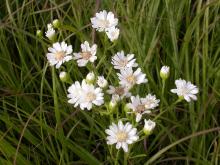
Species Types
Scientific Name
Solidago ptermicoides (formerly Aster ptarmicoides)
Description
With its white, petal-like ray florets and pale disc florets, upland white goldenrod is truly the oddball of the goldenrods: it looks like a white-flowered aster. Indeed, it used to be considered an aster.
Media
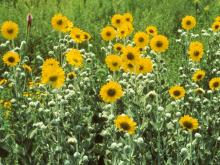
Species Types
Scientific Name
Helianthus spp.
Description
Most people recognize sunflowers when they see them, with their bright yellow ray flowers and rather flattened center of dark disk flowers. There are 16 species of Helianthus in Missouri.
Media

Species Types
Scientific Name
Symphyotrichum spp. (formerly Aster spp.)
Description
Missouri has 24 species of New World asters in genus Symphyotrichum. Most have purple or white ray flowers and yellow disk flowers that turn reddish over time. Most bloom in late summer and fall.
Media

Species Types
Scientific Name
Packera spp. (formerly Senecio spp.)
Description
Ragworts, or groundsels, have several common names, and separating the different species can be a little tricky. But members of genus Packera, with their bright yellow daisy-like flowers, are distinctive as a group. Seven species have been recorded in Missouri.
Media

Species Types
Scientific Name
Packera plattensis (formerly Senecio plattensis)
Description
Prairie ragwort is one of seven Packera species in our state. It grows in sunny, open habitats. Look for its clusters of bright yellow, daisylike flowers in May and June.
Media
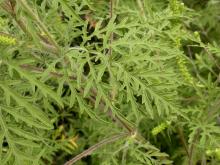
Species Types
Scientific Name
Ambrosia artemisiifolia
Description
Common ragweed is instantly recognizable by its ornate, 2–3 times pinnately lobed, hairy leaves. You’ve probably seen it many times and wondered what it was.
Media
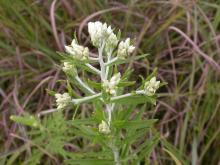
Species Types
Scientific Name
Pseudognaphalium obtusifolium (syn. Gnaphalium obtusifolium)
Description
Sweet everlasting, or old field balsam, catches your eye with its clusters of white, peg-shaped flowerheads and white branches that contrast with the narrow green leaves. It occurs statewide, in a variety of open, sunny habitats.
Media
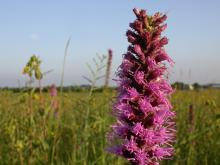
Species Types
Scientific Name
Liatris spp.
Description
Missouri boasts nine native species of blazing stars, or gayfeathers, in genus Liatris. These showy, upright, unbranching spikes of magenta-pink wildflowers bloom in sunny habitats.
Media

Species Types
Scientific Name
Liatris cylindracea
Description
Cylindrical blazing star is one of several Missouri native species of blazing stars, or gayfeathers. It is widely scattered in the Ozarks and eastern Missouri. Identify it by its bracts, which are pressed against the base of the flowerhead, accentuating its cylindrical look.
Media
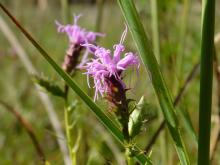
Species Types
Scientific Name
Liatris squarrosa (syn. L. hirsuta, in part)
Description
Scaly blazing star is one of several Missouri native species of blazing stars, or gayfeathers. It is scattered nearly statewide. Identify it by its long-pointed flowerhead bracts that spread or curl sharply away.
See Also
About Wildflowers, Grasses and Other Nonwoody Plants in Missouri
A very simple way of thinking about the green world is to divide the vascular plants into two groups: woody and nonwoody (or herbaceous). But this is an artificial division; many plant families include some species that are woody and some that are not. The diversity of nonwoody vascular plants is staggering! Think of all the ferns, grasses, sedges, lilies, peas, sunflowers, nightshades, milkweeds, mustards, mints, and mallows — weeds and wildflowers — and many more!





















